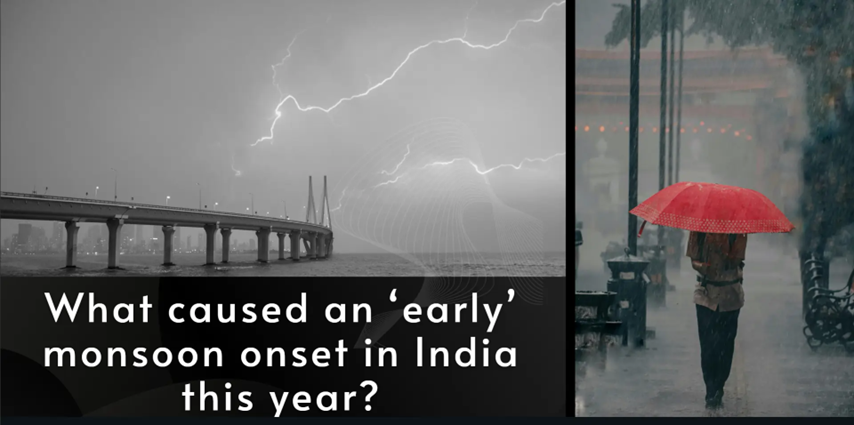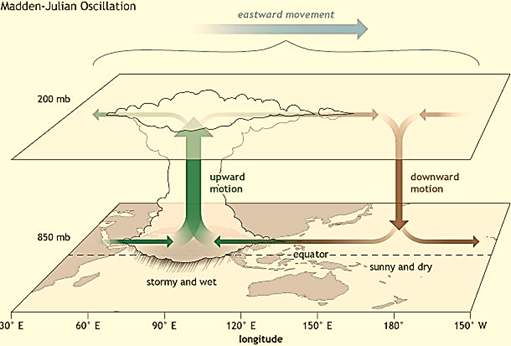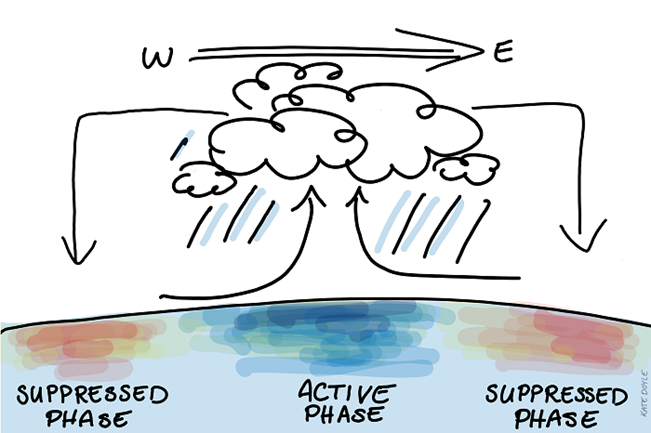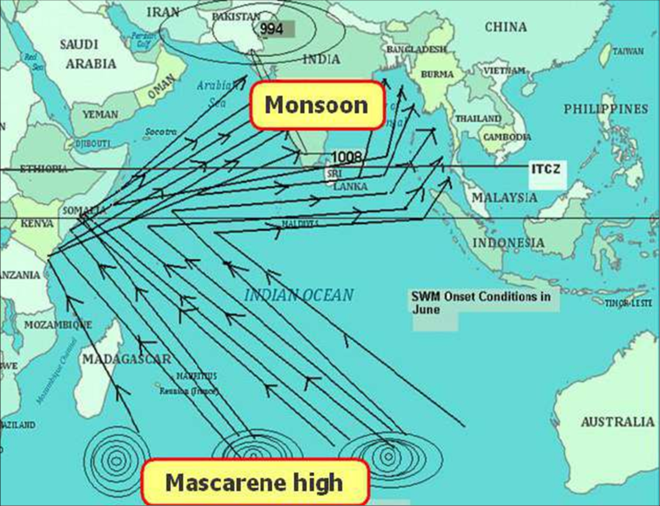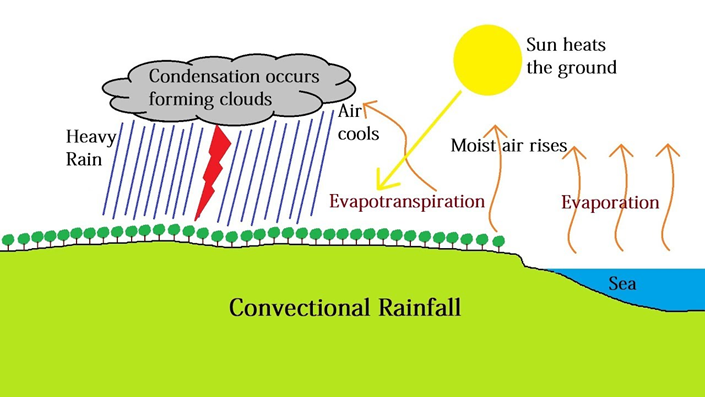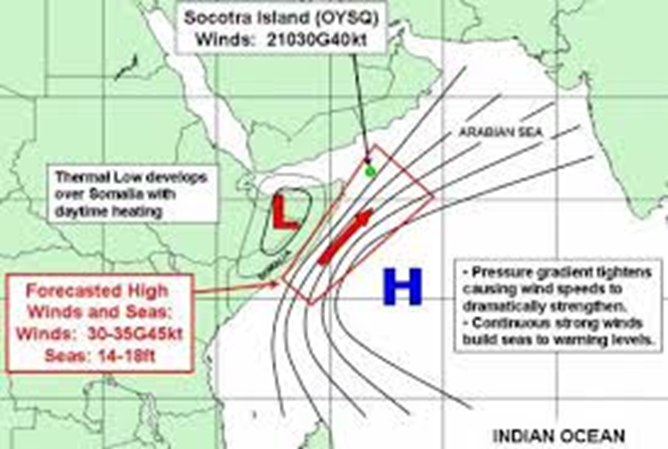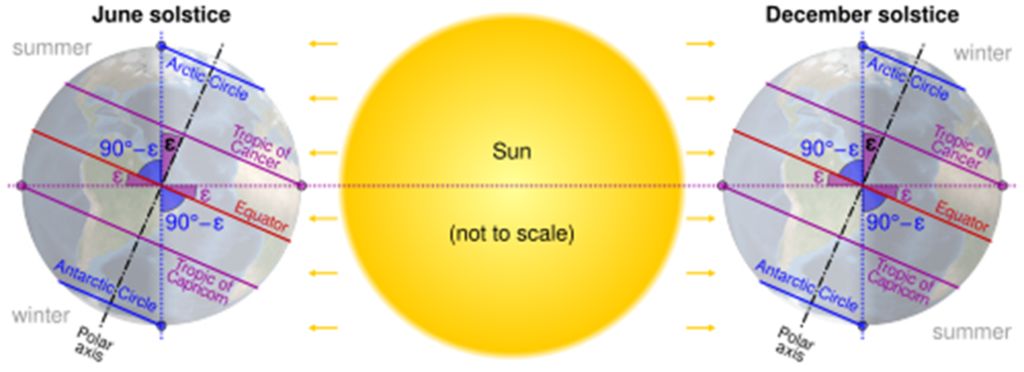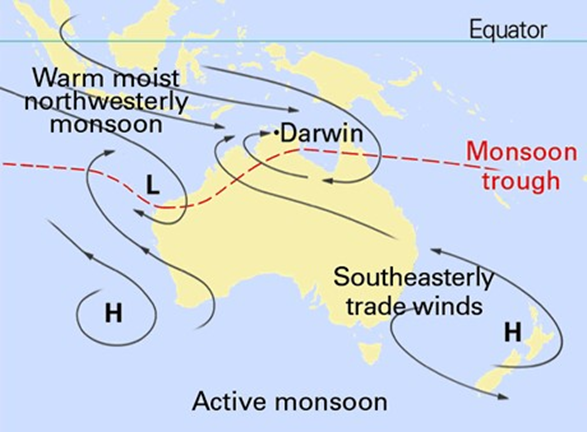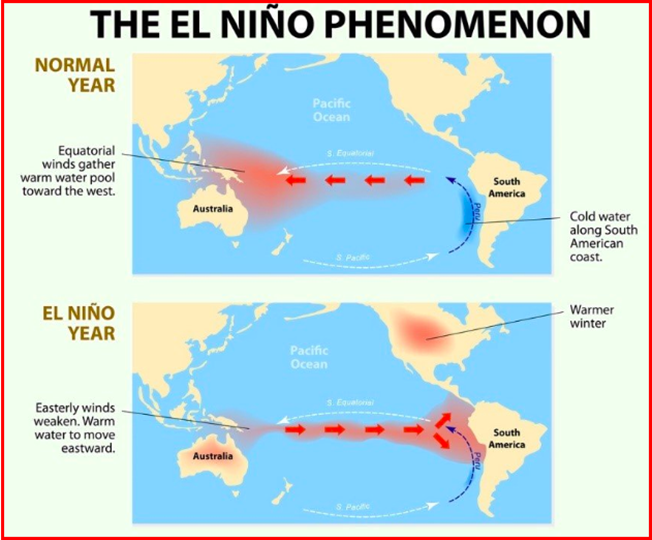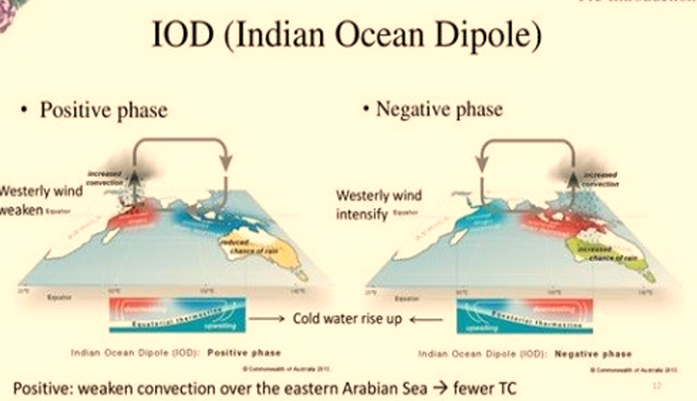IMD declared monsoon onset over Kerala on May 24, eight days earlier than the normal June 1 schedule. This onset signals the start of the June–September southwest monsoon, which delivers over 70% of India’s annual rainfall, making it vital for agriculture and the economy. The last time the monsoon arrived this early was in 2009, on May 23. Two significant developments stand out: first, the monsoon’s early arrival by one to two weeks across various regions; second, its expansive coverage from Kerala to Maharashtra in a single day—May 24.
Why Is Monsoon Early This Year ?
Why In News
- IMD declared monsoon onset over Kerala on May 24, eight days earlier than the normal June 1 schedule. This onset signals the start of the June–September southwest monsoon, which delivers over 70% of India’s annual rainfall, making it vital for agriculture and the economy. The last time the monsoon arrived this early was in 2009, on May 23. Two significant developments stand out: first, the monsoon’s early arrival by one to two weeks across various regions; second, its expansive coverage from Kerala to Maharashtra in a single day—May 24.
Is This Rare Or Routine?
- A simultaneous early onset and wide coverage of the monsoon on day one is not unprecedented in India’s climatic history—but it’s rare.
- A comparable event last occurred in 1971, when the monsoon swept across a large part of Karnataka and portions of Maharashtra in one go, marking strong early rains.
- Although not the first of its kind, it has taken over five decades to witness a similar pattern again. Current forecasts suggest that active monsoon conditions will persist until at least June 2. This sustained phase is likely to help the monsoon push further into Maharashtra and eastern India. However, after this initial surge, a slowdown in its advancement is expected in early June—a common occurrence in recent years.
- These temporary pauses are often caused by mid-latitude dry air intrusions, which disrupt the moisture-bearing monsoon winds, resulting in breaks in rainfall and delayed progression. Such interruptions have become increasingly frequent, contributing to the monsoon’s variability.
Factors Behind Early Monsoon Onset In India
- The early onset of the southwest monsoon was driven by favourable atmospheric and oceanic conditions.
- A low-pressure area over the Arabian Sea and a trough over Vidarbha enhanced moisture inflow and atmospheric convection, accelerating the monsoon’s advance.
- Madden-Julian Oscillation (MJO) : MJO is a significant and complex ocean-atmosphere phenomenon that originates in the Indian Ocean and plays a crucial role in influencing the Indian monsoon. MJO is a moving system of winds, cloud, and pressure that brings rain as it circles around the equator. The phenomenon takes its name from the two scientists who identified it in 1971 — Roland Madden and Paul Julian, who then worked at the National Centre for Atmospheric Research in Boulder, Colorado.
- It involves disturbances in clouds, winds, and pressure that move eastward at a speed of 4–8 metres per second.
- These disturbances, known as MJO wind bands, can circle the globe within 30 to 60 days and lead to major weather changes along their path.
- When the MJO is in a favourable phase, it can enhance rainfall over India during the monsoon season.
- Mascarene High : IMD describes the Mascarene High as a high-pressure area found around the Mascarene Islands (in the south Indian Ocean) during the monsoon period. The variation in the intensity of high pressure is responsible for heavy rains along India’s west coast.
- Convection and Rainfall : An increase in convective activity—vertical movement of heat and moisture in the atmosphere—can lead to rainfall.
- For example, a convective system over Haryana recently moved southeastward and caused rain in the Delhi region.
- Somali Jet and Monsoon Strength : The Somali jet is a low-level, cross-equatorial wind system originating near Mauritius and north Madagascar.
- By May, it crosses the east coast of Africa and reaches the Arabian Sea and the west coast of India. A strong Somali jet enhances the monsoon winds, contributing to a robust monsoon.
- Heat-Low and Moisture Inflow : With the Sun’s shift to the northern hemisphere during summer, a low-pressure zone forms over the Arabian Sea.
- A heat-low over Pakistan and nearby regions acts like a suction pump, drawing moist air into the monsoon trough and intensifying monsoon rainfall.
- Monsoon Trough : The monsoon trough is an elongated low-pressure area stretching from the heat low over northwest India to the north Bay of Bengal. Its north-south oscillation brings rainfall across the core monsoon zone during June to September. Additionally, the pressure gradient and the monsoon onset vortex—a cyclonic system in the Arabian Sea—contribute to the timely and strong onset of the monsoon.
- Neutral El Nino Conditions: El Nino typically weakens the southwest monsoon by warming sea surface temperatures (SSTs) in the Pacific. This year, however, the El Nio–Southern Oscillation (ENSO) is in a neutral phase, which has removed a major obstacle to a healthy monsoon season.
- Influence of Indian Ocean Dipole (IOD): The IOD is defined by the temperature contrast between the western and eastern Indian Ocean. A positive IOD strengthens monsoon winds by enhancing the west-to-east moisture flow. Although the IOD is currently neutral, models suggest a slight positive phase may develop in August and September, potentially aiding the latter half of the monsoon. While the early and widespread onset of the monsoon brings hope for a good rainfall season—especially crucial for agriculture, water security, and power generation—it also comes with challenges.
- Rapid monsoon advancement can lead to intense rainfall events, flooding, and disruptions in areas unprepared for early rains.
- As India continues to grapple with the growing impacts of climate change, understanding the evolving behaviour of the monsoon is more critical than ever.
- The 2025 season has already proven to be unusual, and how it unfolds in the coming weeks will offer deeper insights into the new normal of South Asia’s climate patterns.
